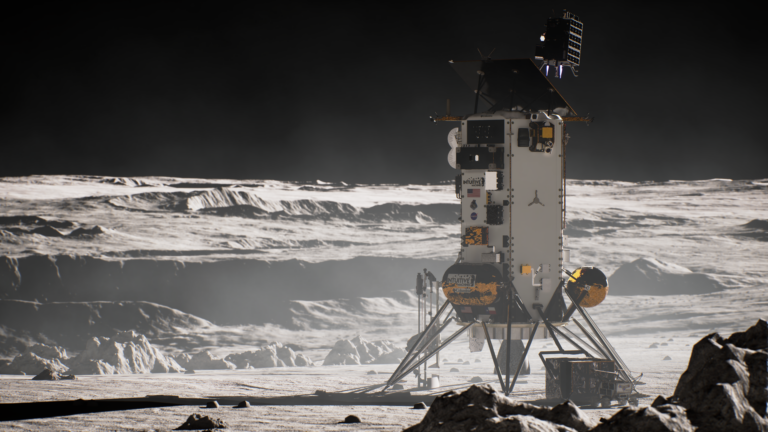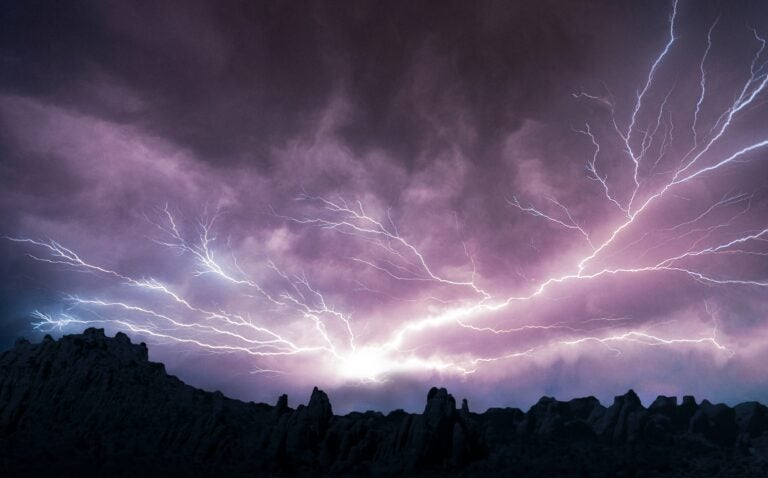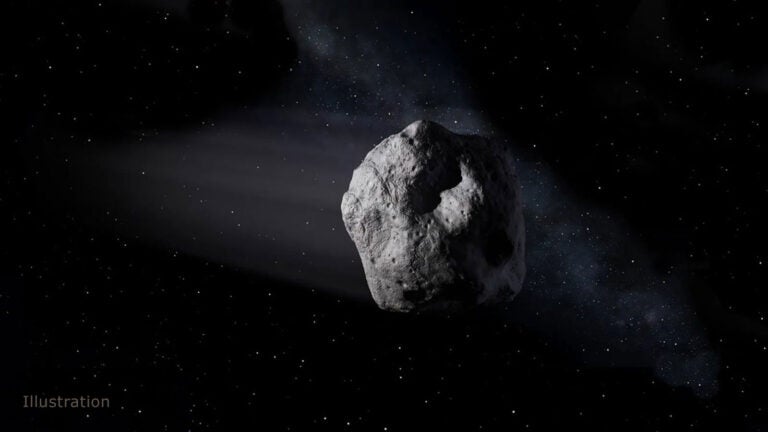When the Sun is low on the lunar horizon, impact craters appear from Earth as dramatic, deep pits with uplifted, rugged rims. Although this appearance is slightly deceiving, lunar craters are quite prominent depressions. Planetary scientists usually define the depth of an impact crater as the distance from the crater rim to the crater floor. Well-preserved large craters like Tycho (about 53 miles [85 kilometers] across), Copernicus (58 miles [93km] wide), and Aristarchus (25 miles [41km] in diameter) have rim-to-floor depths of about 15,700 feet (4,800 meters), 12,500 feet (3,800m), and 9,800 (3,000m), respectively. If Denali (Mount McKinley) in Alaska, the highest mountain in North America measured from the base to the peak, were placed on the floor of Tycho, its highest point would rise slightly above the crater’s rim.
In relative terms, however, these large so-called “complex” craters are surprisingly shallow features. Their depths are only a small fraction, about 1/15 to 1/25, of their diameters. So these “deep pits” are actually shallower than dinner plates.
In contrast, fresh craters smaller than about 9 to 12.5 miles (15 to 20km) in diameter have much higher depth-to-diameter ratios. A good example of these simple lunar craters is Linné. It has a diameter of 1.3 miles (2.2km) and a depth of 1,800 feet (550m) — about the same as the Statue of Liberty placed on top of the Empire State Building. To compare with the best example on Earth, Linné is about twice the diameter of Barringer Meteorite Crater in Arizona, but almost three times as deep. Linné’s depth-to-diameter ratio (¼) is similar to that of a soup bowl.
Because the Moon’s diameter is small, its surface is highly curved, which makes the horizon extremely close. This further enhances the apparent flatness of larger craters to someone on the lunar surface. (If a visitor were 6.5 feet [2m] tall, the lunar horizon would be only about 1.6 miles [2.6km] away.) The Moon’s curvature “sinks” the rims of larger craters beyond the horizon. A structure would need to rise very tall and be very close for it to look high. — Teemu Öhman, Lunar and Planetary Institute, Houston, Texas
In relative terms, however, these large so-called “complex” craters are surprisingly shallow features. Their depths are only a small fraction, about 1/15 to 1/25, of their diameters. So these “deep pits” are actually shallower than dinner plates.
In contrast, fresh craters smaller than about 9 to 12.5 miles (15 to 20km) in diameter have much higher depth-to-diameter ratios. A good example of these simple lunar craters is Linné. It has a diameter of 1.3 miles (2.2km) and a depth of 1,800 feet (550m) — about the same as the Statue of Liberty placed on top of the Empire State Building. To compare with the best example on Earth, Linné is about twice the diameter of Barringer Meteorite Crater in Arizona, but almost three times as deep. Linné’s depth-to-diameter ratio (¼) is similar to that of a soup bowl.
Because the Moon’s diameter is small, its surface is highly curved, which makes the horizon extremely close. This further enhances the apparent flatness of larger craters to someone on the lunar surface. (If a visitor were 6.5 feet [2m] tall, the lunar horizon would be only about 1.6 miles [2.6km] away.) The Moon’s curvature “sinks” the rims of larger craters beyond the horizon. A structure would need to rise very tall and be very close for it to look high. — Teemu Öhman, Lunar and Planetary Institute, Houston, Texas










